Our expert local tour guides will meet with you on your arrival at the Kotoka International Airport Accra, which is situated on the beautiful gold coast of Western Africa. Look out for the African Star Tours sign when you leave the main terminal building after passing through customs. Make yourself known to your guides who will be accompanying you for the duration of your time in Ghana and they will take care of you from here.
After boarding our vehicle, which will be your mode of transport for the duration of your tour, we transfer you to your accommodation which is situated in Accra. Once we have checked you in, our experienced guide will offer you Akwaaba (welcome) and brief you on all aspects of your trip. You can enjoy your evening meal at the hotel restaurant whilst acclimatising yourself to West Africa.
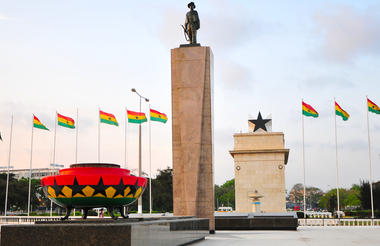
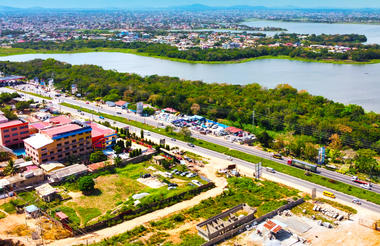
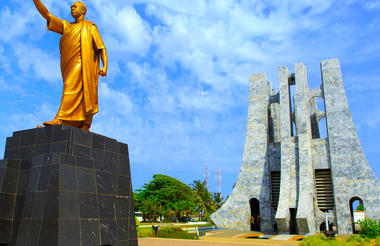
Makola Market, Artist Alliance Gallery, Fantasy Coffins, Kwame Nkrumah Mausoleum and Jamestown Community
A relaxed morning to allow the rush hour traffic to pass before setting off to one of Accra’s best local markets. We recommend missing or have a light breakfast at the accommodation this morning as it is great to experience the local street foods Ghanaians eat for breakfast at one of the many stalls selling in the Makola Market. Traders sell almost anything here from local herbal remedies, traditional cloth, jewelry and food to mobile phones, televisions, and sound systems to mention but a few. The hustle and bustle of the market is a wonderful insight into daily life for many locals who trade or shop here 7 days a week. A good opportunity to purchase some souvenirs but do not forget to barter as is the norm in Ghana.
There are some wonderful local artists in Ghana and it is a real treat to see some of their work. The Artist Alliance Gallery on the beach front in Accra is the ideal location to experience traditional and contemporary art and artifacts ranging from paintings, carvings, furniture, jewelry, fabrics and photography from all of Ghana and the neighbouring countries.
Next it is off to“Fantasy Coffins” of Teshie Nungua. Funeral and burial ceremonies in Ghana are very solemn occasions, but after the burial a celebration follows. Ghanaians believe that the departed move into another world and the coffins made here may represent the occupation of the deceased or depict something that was important to them. There is all manner of coffin designs which one could be buried in from cars, cocoa pods, cigarette packets and airplanes to crocodiles, shoes, bottles of beer and boats to mention a few. During your time here you can also venture to their workshop and meet the coffin makers.
In the afternoon you will pass by Black Star Square which houses the independence monument and then continue to Independence Square which is the main ceremony grounds and where you will find the enclosed flame of African liberation, which was lit by Kwame Nkrumah himself in 1961.
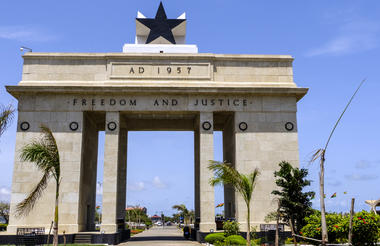
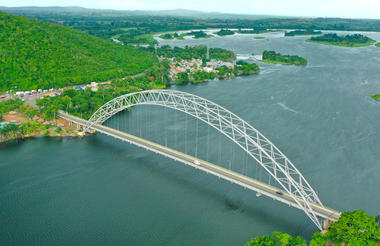
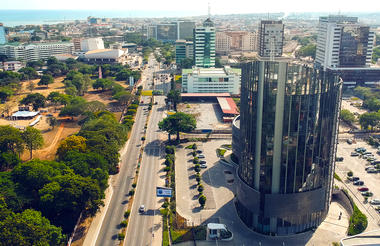
Grand Marche, German Cathedral and National Museum of Togo
After a relaxed breakfast in this beautiful setting, you will depart for Lomé the capital city of Togo. The journey will take approximately 4 hours and on arrival in Lomé you enjoy lunch at a restaurant selling local and international dishes. After lunch you will visit the grand Marché or big market which will be one of your highlights in Lomé. Initially, it seems chaotic, but you will be surprised at the orderliness and the hectic pace of this incredibly vibrant and beautiful market. Though it is supposed to be an indoor market the three-story building and all the surrounding streets overflow with vendors selling everything imaginable.
The Sacred Heart or German Cathedral is next on your agenda after the exhilarating experience of the big market. Built in 1905, this imposing Gothic piece of architecture is one of the most beautiful legacies of the Germans. A short distance from the cathedral is the National Museum of Togo, founded in 1975 which houses ethnographical cultural and artistic exhibits.
To be in Lome and not visit the witches market/ marché fetiches at Akodessewa and the artisanal village will not give you a thorough insight into local traditions here, so after lunch there is the option to visit these places. The Akodessewa fetish market is an important part of the culture in Togo. Stalls sell a collection of dried animal parts and skins of reptiles, mammals, and birds with a compliment of dried herbs. The vendors usually double as soothsayers claiming the ability to predict your future and at the same time forestall any mishap. It is an eyebrow raising experience. Artisans’ village is next where you will see artisans weaving cloth, carving statues, making baskets, lampshades and sewing leather shoes besides much more. It is fascinating to watch the artisans doing their own thing with such skill and dexterity and always with a smile.



Cruise on Lake Togo to visit Togoville and transfer to Ouidah
Today you head to Benin, but before departing Togo, you have an interesting morning ahead. Aneho is found 48km east of Lome, approximately an hour’s drive from the capital and was historically known as Little Popo. An important town during the slave trade era as there was a local slave market here. The neighboring town of Sebe was formerly the second capital of German Togoland from 1887 to 1897 when it was transferred to Lomé. On arrival in Aneho you take a pirogue across Lake Togo to Togoville which is on north eastern side of the Lake. Togoville is historically known as the center of Voodoo in Togo. Many Voodoo practitioners were taken as slaves from here to Haiti. The chief’s house known as Maison Royal has a room that houses the old King’s throne which dates to 1884. It is in this room in 1884 the then chief Mlapa III signed a peace treaty giving all of what was then known as Togoland to Germany. As you mix with the locals walking through the communities, you will visit the many active shrines learning their importance to the locals living here. Prior to setting off back to Aneho also visit a shrine that commemorates the appearance of the Virgin Mary on Lake Togo in the late 1970s.
Lunch will be taken at a nearby hotel before the next exciting part of your West African adventure - Ouidah the birthplace of Voodoo. It should only take approximately 2 hours to cross the border into Benin and reach the ancient town of Ouidah. On your arrival in the afternoon, you will check into your accommodation and relax for the remainder of the day.



Portal of No Return, Sacred Pythons Temple, and Sacred Forest
After breakfast set off for your tour of Ouidah which is regarded as the Voodoo centre of West Africa. During the 17th and 18th centuries enslaved Africans from Benin, Togo and other West African countries were shipped from Ouidah which had the only port in the country until slavery was officially abolished in 1807.
Most of the slaves were shipped to Brazil, Haiti, and the Caribbean Islands thus the strong Voodoo presence in these parts of the world. A tour of the historical museum of Ouidah is a must as is visiting the sacred forest which consists of figurines representing deities of kings and the founders of Ouidah. The sacred python’s temple is where you will end your tour of Ouidah. This temple houses pythons which are revered by the locals and no one is permitted to harm, capture or keep any of the pythons which leave the temple. These pythons are supposed to be returned to the temple when found outside. After visiting all these wonderful places in Ouidah, enjoy lunch before continuing your journey to Cotonou. On arrival check into your accommodation, and have the remainder of the day at leisure.



Ethnographic Museum, Da Silva Museum, Honme Museum and Great Mosque
Your first point of call during your time in Porto-Novo is the Ethnographic Museum which was established by the Dahomey Institute in 1957. The museum houses costumes, ceremonial masks and drums in addition to other historical artifacts. The Royal Palace now known as the Honme Museum is an interesting excursion, the museum is housed in the walled compound of King Toffa who signed the first treaty with the French in 1863. Most of the displays here are from the period of King Toffas reign and there is an excellent example of Alounloun a traditional Beninese instrument used to play music called Adjogon.
A stone throws away from Honme is the Da Silva Museum which is in a beautiful Afro-Brazilian house dating back to the 1870’s. An interesting and informative excursion, this eclectic museum is home to some wonderful Afro-Brazilian artefacts and is a must visit during your time here. The Great Mosque in Porto Novo offers excellent photographic opportunities and the history behind how this former Church became a Mosque is fascinating. After it is time to head back to Cotonou where you enjoy lunch at a local restaurant selling international and local dishes before visiting the Dantokpa Marche one of West Africa’s largest outdoor markets.
Covering and area of over 20 hectares it sells everything you could imagine and is a major contributor to the Benin economy. The wax print section of the market is a must visit if you are looking for fabric souvenirs from your time in Benin.
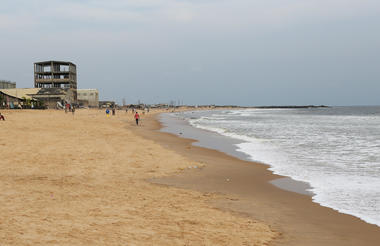
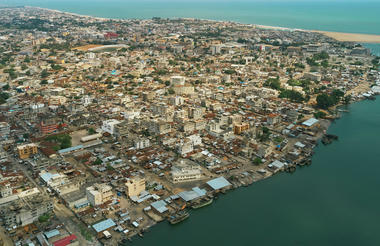
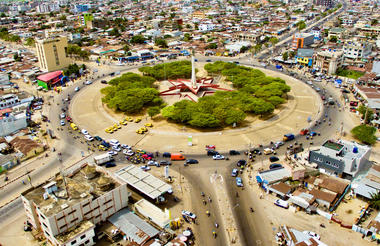
Ganvie the Venice of Western Africa and Agongointo
Your focus today prior to heading to Abomey is visiting one of the most beautiful communities in Benin at Ganvie. Known as the Venice of West Africa, Ganvie is a community of over 30,000 inhabitants living in structures built on stilts over Lake Nokoue. The largest community living on water in Western Africa, where most locals are fishermen. A relaxed paced day and you may decide to try your hands at fishing under the tutelage of a local fisherman. If you are lucky and get a sizeable catch, then your lunch will be fresh fish grilled the local way.
After lunch set off to Abomey which is approximately a 2 hours’ drive. The aim is to reach Abomey by mid- afternoon and visit the recently (1998) discovered underground dwellings of Agongointo - Zoungoudo just a few kilometers outside of Abomey. Discovered during road construction these underground dwellings are believed to date back to the 16th century during the reign of King Dakodonou the second King of Abomey. There are believed to be several hundred of these built 10 meters underground and they were used to protect locals from invaders in addition to offering the element of surprise for local warriors when attacking the enemy.
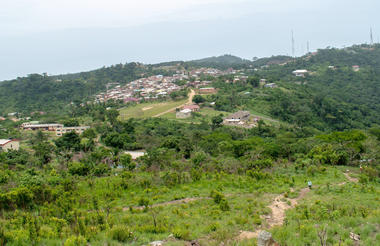
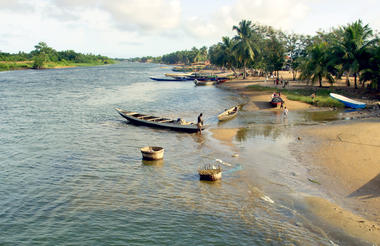
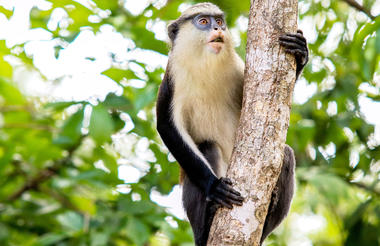
Royal Palaces and Historical Museum of Abomey and Transfer to Ho
An early start as the morning is dedicated to a city tour of Abomey before you depart back to Ghana. Abomey was the capital of the Dahomey kingdom from 1625 to 1900. The main attraction here is the royal palaces or what is left of them. These clusters of old buildings were constructed by 12 successive kings and cover an area of about 47 hectares. The palace buildings, terraces and open courtyards have a perimeter of 4 kilometers a 10-meter-high wall and could accommodate up to 8,000 people.
Your visit here will give an insight into the history and exploits of these warrior kings. The architecture is quite unique and though the palaces are no more inhabited, two of them are now in use as the Historical Museum of Abomey. The museum contains some 1050 relics of the Abomey kings which include Voodoo artefacts, some skulls, and banners of the royal family. Some of the wall art depicts the bloody battles of the people of Abomey. The tour ends at the artisans shop next door, after which you will set off for Wli.
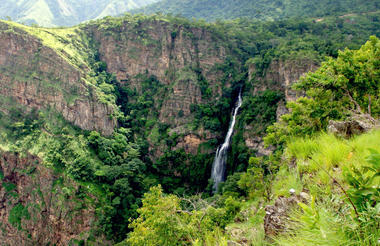
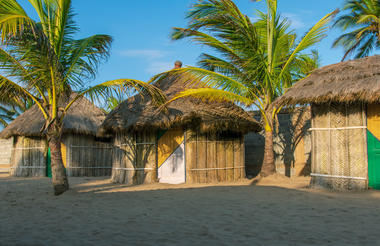
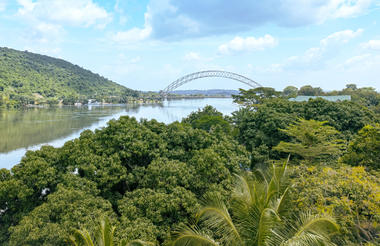
Wli Falls, Tafi Atome Monkey Sanctuary and Akosombo
This morning set off for the nearby Wli (Agumatsa) Falls found in the Agumatsa wildlife sanctuary in the Volta region of Ghana. The Wli Falls are believed to be the highest waterfall in West Africa and the surrounding flora and fauna make this an idyllic setting. On your arrival you will trek through the thick semi deciduous forest leading to the falls from Wli village. As you near the falls you can hear the enormous colony of Straw-coloured Fruit Bats found on the adjacent cliffs mixed with the powerful flow of the river. You can relax and enjoy a paddle in the pool beneath the waterfall which is safe for swimming if you are feeling adventurous. If you are feeling super fit, then there is also the option to hike to the upper falls before returning to your accommodation for lunch and to check out.
The afternoon is spent with the locals from the village of Tafi Atome, a wonderful community protecting a population of endangered True Mona monkeys. The community here perceives the Mona Monkeys to be sacred messengers from the gods and have been protecting the monkeys and their habitat for over 200 years. Quality time is dedicated here learning more about the history behind their protection from the local traditionalists during your time in the village. You then venture into the surrounding forests to see these beautiful primates and during the walk your local guide will identify the many medicinal plants that grow here and explain how the locals use them to make traditional herbal remedies. The local ethnic group here are Ewe.
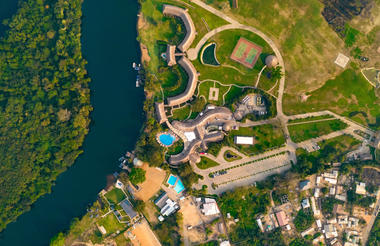
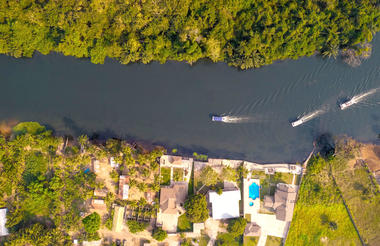
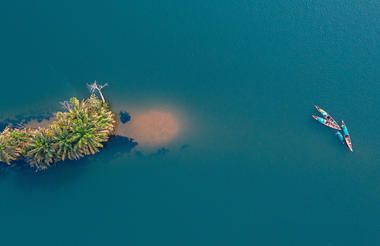
Aburi Botanical Gardens, Koforidua Beads Market and Kumasi
Your journey today will take you into the beautiful Akuapem hills with outstanding views across Accra and Tema in the distance. At the top of the range, you find the Aburi botanical gardens, set in a beautiful location that were founded by the British in 1890. The gardens are home to a wide variety of indigenous and exotic flora, offering outstanding views to Accra on a clear day. As you walk around the gardens your guide will identify the many trees and plants found here, some with medicinal properties and explain how they benefit the locals. There are several rare butterflies found here and birds are also in abundance.
A short distance from the gardens you find the relaxed and friendly Aburi craft village, where traditional African drums, sculptures and other crafts have been carved for generations. As you watch the skilled craftsmen at work it is worth noting that prices here are amongst the lowest in Ghana, making Aburi an ideal place to pick up some souvenirs. Your guide will talk you through the meaning and local beliefs connected to many of the sculptures that have been made the same way throughout history. Your lunch will be taken in Koforidua the capital of the Eastern Region of Ghana. Koforidua is famous for its traditional bead market and it is a must visit before you set off on the final leg of your journey to Kumasi. All the traders here sell local beads and some of them are antique, others newer designs but all beautiful and very reasonably priced.
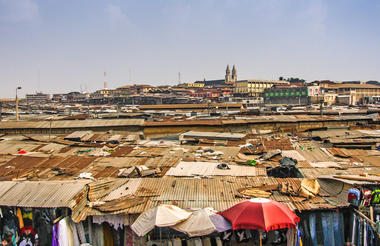
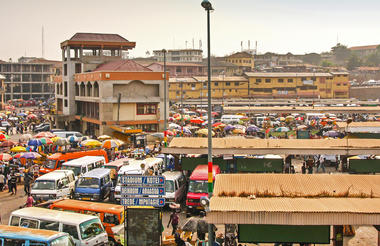
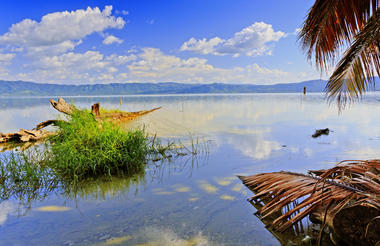
Ancient Kente and Adinkra Villages, Ashanti Traditional House and Sakoban Krofrom
A morning visit to the last material remains of the great Asante Empire as you visit the traditional Asante buildings that are now recognized as World Heritage Sites by UNESCO. There are 10 active shrines within the buildings which are made from bamboo, timber and mud and thatched roofs. The walls are designed with motifs that have traditional symbolic meanings attached to ancient Adinkra symbols that you will learn more about later today. This is also where Nana Yaa Asantewaa, possibly the most important women in Ashanti history comes from, a great female warrior who led the Ashanti’s in the 1901 war against the British. Continue your journey through Ashanti history by visiting the traditional villages of Adanwomasie and Ntonso. Your first stop is Adanwomasie, the birthplace of Ghana’s rich colorful Kente cloth. Adanwomasi produces some of Ghana’s finest Kente cloth, many designs of cloth are woven here, and some are exclusive only to this region. Quality time is dedicated here as you walk through the community, interacting with the locals whose families have been weaving kente for generations playing an important role in the history of this beautiful cloth. An ideal time to purchase quality kente cloth at very low prices before you set off for Ntunso.
The ancient village of Ntunso, is where adinkra cloth and symbols originate. These traditional symbols all have meanings and are carved from calabash shells. The adinkra symbols are then printed onto traditional cloth using natural dyes made from the bark of certain local trees. Adinkra cloth has been adorned by the Ashanti’s for more than 4 centuries and pre-dates kente cloth. Even today most Ashanti’s will wear adinkra cloth for funerals, festivals and other important occasions. During your time here, you can make your own strip of adinkra cloth using symbols with personal significance. After lunch visit the village of Sokoban Krofrom where traditional brass casting has been the main source of income for the community for generations. A wide selection of items ranging from beads and jewelry to traditional statues are made here. The methods used to produce these wonderful brass works has not changed and during your time here you will see a demonstration of the skilled process.



Manhyia Palace, Assin Manso and Cape Coast Castle
This morning head to the Manhyia Palace, home of the Asantehene King of the Ashanti’s and ruler of the powerful Asanteman Kingdom. The Palace Museum offers a fascinating excursion through the history of this powerful tribe and is extremely informative on the well documented Ashanti history and culture. Your tour gives you a firsthand insight into the legacies of the Ashanti’s and enables you to understand their culture during your time in this region. From here set off Southwards to Elmina in the central region of Ghana. The town of Elmina was given its name by the Portuguese due to the abundance of Gold found in Ghana, translated Elmina means The Mine.
Gold is of such importance to Ghana today and historically that the country was even known as the Gold Coast before independence. Ghana’s gold is of the highest quality and they are the 8th largest exporter in the world and second largest exporter in Africa behind South Africa. Stop at Assin Manso, an important town along the enslaved African trade routes. The town surrounds the Ndonkor Nsuo (Enslaved African River). This river is where enslaved Africans were checked for fitness and bathed before being transported to Cape Coast for shipment to the Americas. The slaves would have walked hundreds of kilometers from Northern Ghana through thick forests in shackles and chains, many being in poor health once they reached Assin Manso. Once bathed and rested the slaves would continue the final 32-mile march to the dungeons of Cape Coast Castle where they would remain for up to 6 weeks before being shipped to the Americas. In 1998, a symbolic gesture was made when the bodies of two free(previously enslaved) Africans, Samuel Carson from New York U.S.A and Crystal from Kingston Jamaica were returned to Cape Coast Castle and symbolically passed through the “Door of no Return” before being transported to Assin Manso for re-internment.
After continue to Cape Coast, where you enjoy lunch upon arrival at a local restaurant overlooking the ocean before visiting the nearby Cape Coast castle which has been designated as a world heritage site by UNESCO. The castle is a thought-provoking monument to a harrowing period in the region’s history. Quality time will be spent in the afternoon on an emotional journey touring this castle which held more enslaved Africans captive than any other in West Africa,. You will view the dungeons and the infamous “Door of no return”. There is a historical museum inside, which explains the entire history of the castle and Cape Coast itself, as well as a souvenir shop selling literature on all of Ghana’s forts and castles, as well as the cultural history and traditions of Ghana. A wonderful but thought-provoking day.



Kakum National Park, Canopy Walkway, Stingless Bees, Elmina Castle and Traditional Batik Making
An early start as you set off for Kakum National Park in the morning - Africa’s world-famous rainforest canopy walkway. This is an incredibly beautiful, tropical guinea rainforest and the canopy walkway is sure to be a highlight of your time in Cape Coast. This national park protects the original habitat that was found in this location and was the local’s home and major source of food. The walkway consists of 7 bridges, attached to 7 emerging trees, 40 metres above the rainforest floor.
Prepare to take a deep breath as you walk the suspended bridges. You will marvel at the outstanding views that stretch for miles across this breathtaking rainforest as you rest on the viewing platforms that are attached to the emerging trees between the bridges. Over 40 different mammal species have been recorded within the park, which includes forest elephants, leopards and 6 primate species to mention just a few.
A short distance from Kakum and on the border of the forest is the International Stingless Bee Project. There have been approximately 9 species of stingless bees identified here in Ghana and their importance to our eco system is paramount. Your tour of the centre teaches about the importance of bees locally, their medicinal qualities and you get to see their hives, as well as time to taste and buy quality stingless bee honey.
Lunch will be enjoyed at a local restaurant selling a wide selection of international and local dishes. This restaurant is run by a local organization that helps deprived children in the Cape Coast area improve their lives through education and advocacy. Your afternoon is dedicated to immersing into true African art during a traditional batik making workshop with Global Mamas. An excellent organization empowering local women to learn artistic skills selling their finished products in the fair-trade market enabling them to support their families. There is no better way to get to know locals and hear how life is daily than by working side by side with them and making your own traditional batik garment. Joining a local artisan in his/her workshop to learn the traditional techniques of batik making and production from the wax heating, stamping, and drying makes for an interesting afternoon. You will be given a piece of cloth for you to produce your own garment to take back home, a wonderful souvenir of your time in Ghana and one that will hold fond memories every time you wear it.
A short distance from the batik workshop is Elmina where you visit the local fishing market and walk the short distance to visit the boat builders in this community. Almost all the fishing boats used in this bustling fishing community are traditional wooden boats. Their design has not changed in centuries and neither have the tools and methods used to build them. During your time in Elmina town, you will visit the castle of St. George in Elmina. This is the oldest extant colonial building in sub-Saharan Africa dating from 1482. This castle is steeped in history and played a prominent part during the tragic transatlantic enslaved African trade era. There is an informative museum inside which concentrates on local history and it is designated a world heritage site by UNESCO.
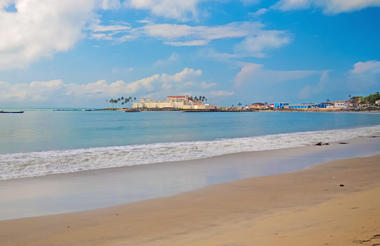


Beach Relaxation, Fort Amsterdam, and Accra for Departure
A relaxing morning enjoying the facilities of your accommodation, maybe go for a swim, relax on the beach, or just enjoy your final morning at this beautiful location. Before setting off back to Accra enjoy your lunch overlooking the beautiful Gold Coast of West Africa. On route to Accra along the coastal road visit Fort Amsterdam in the town of Abandze. This is the first Fort built by the British between 1631 and 1638 and soon became the headquarters of English Gold Coast activities. In 1665 after a long and bloody battle the Dutch captured the fort and that is where it gets its name Fort Amsterdam. In 1811 locals loyal to the British from a neighboring community, Anomabo destroyed the fort, it was later restored to its former glory in 1951.
It is believed that the first slave prison on the Gold Coast was in the hollow south east bastion of the fort. After an informative tour continue your journey to Accra. On arrival back in Ghana’s capital city you may have time to head to the Accra Mall to give you an insight into modern day Ghana. An opportunity to also purchase some last-minute souvenirs before heading home. Your early evening meal will be taken at a locally owned restaurant serving an excellent selection of local and international dishes. After your meal, our team will transfer you to the airport for your departure.
**You will need to book an evening flight from Accra, or we can arrange an additional night of accommodation.









